Junagarh Fort
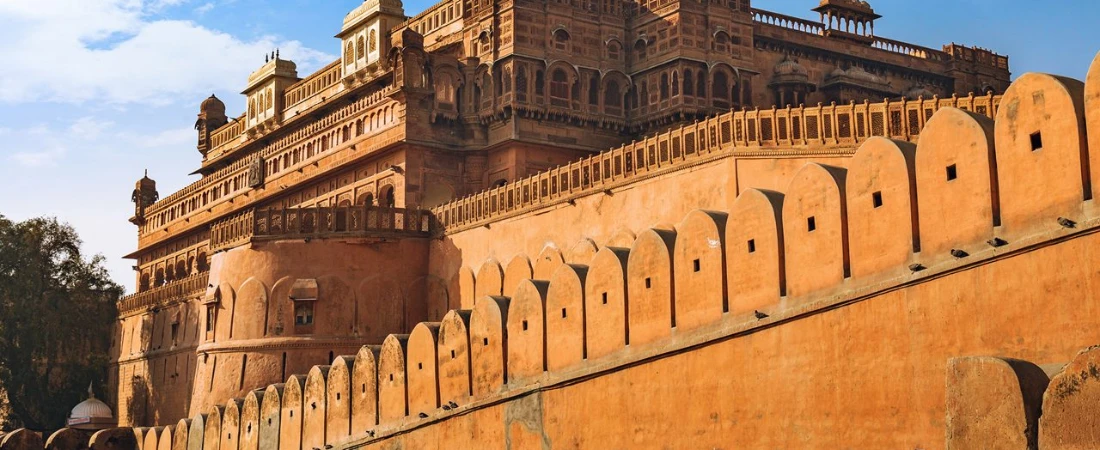
In the vibrant city of Bikaner, surrounded by the golden sands of Rajasthan, stands one of the most magnificent forts in India — Junagarh Fort. This architectural marvel is not only a symbol of strength and heritage but also a rare example of a fort built on the desert plains rather than a hilltop. Constructed in the late sixteenth century, Junagarh Fort continues to captivate travelers with its royal palaces, intricate carvings, grand courtyards, and remarkable tales from the past. The fort is a living narrative of Bikaner’s valorous rulers, their refined tastes, and their unwavering defense of the city through centuries. A visit to Junagarh Fort offers much more than historical insight — it is an immersive experience into Rajasthan’s rich legacy, making it an essential stop for anyone exploring the cultural heartland of India.
The Origin and History
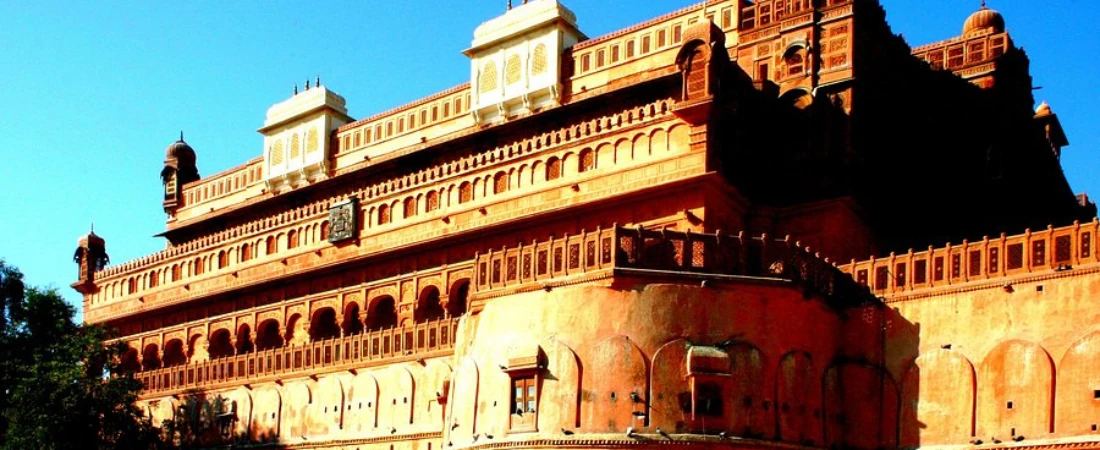
Junagarh Fort was built between 1589 and 1594 by Raja Rai Singh, the sixth ruler of Bikaner and one of the most prominent generals in the court of the Mughal emperor Akbar. With the honor and wealth he received from the Mughals, Raja Rai Singh envisioned a fort that would not only be a stronghold of defense but also a symbol of Bikaner's growing power and artistic sophistication. Originally called Chintamani Fort, it was later renamed Junagarh, meaning “Old Fort,” after the royal family moved to the newly built Lalgarh Palace in the early twentieth century. Over the years, many of his successors added their own contributions, resulting in a stunning blend of architectural styles. What makes Junagarh Fort stand out in Rajasthan’s history is its incredible record — it was never captured by enemies despite numerous attempts. This unbeaten record of defense gives the fort a unique position among India’s grand forts and reflects the strategic intelligence and resilience of Bikaner’s rulers.
Architectural Brilliance
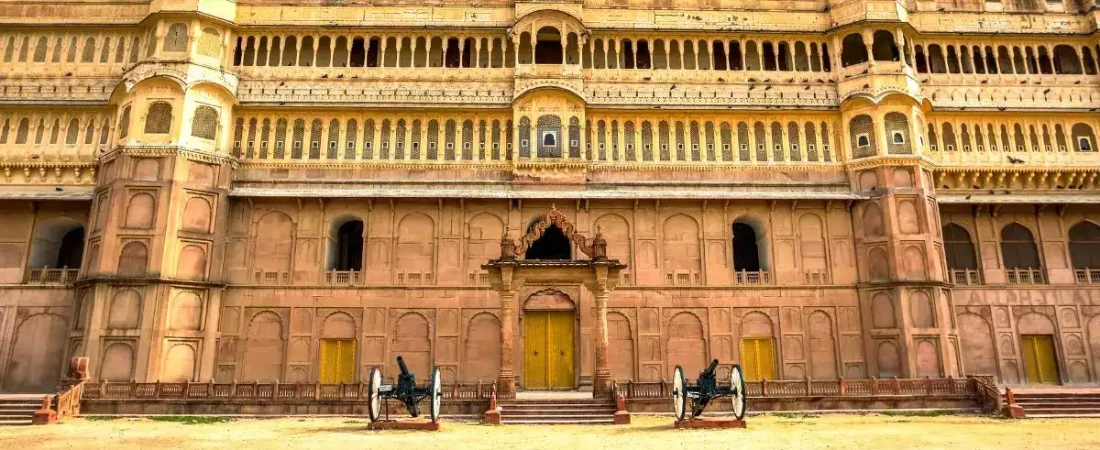
Junagarh Fort is a true masterpiece of architectural fusion. Its design reflects a unique blend of Rajput, Mughal, Gujarati, and even British influences, which can be seen in the detailing of every palace, archway, and courtyard within the complex. Built primarily with red sandstone and marble, the fort stretches across a sprawling 5.28 hectares and is encircled by a formidable 986-meter-long wall dotted with thirty-seven bastions. Unlike many forts built for elevation and strategic vision, Junagarh sits proudly on flat land, a decision that highlights both engineering mastery and confidence in its defense systems. The entrance gates — Suraj Pol and Karan Pol — open into a world of luxurious palaces such as Anup Mahal, Chandra Mahal, Phool Mahal, and Badal Mahal. Each palace tells its own story, with golden mirror ceilings, Italian tiles, frescoed walls, and intricately carved balconies. Badal Mahal is especially unique, with its painted blue walls and cloud motifs depicting the monsoon — a rare theme in a desert fort. The inner layout is both grand and practical, designed with narrow paths and watchtowers to safeguard against surprise attacks while simultaneously providing royal comfort and beauty. The mixture of cultural and artistic elements makes Junagarh Fort a living canvas of centuries-old architectural innovation.
Inside the Museum
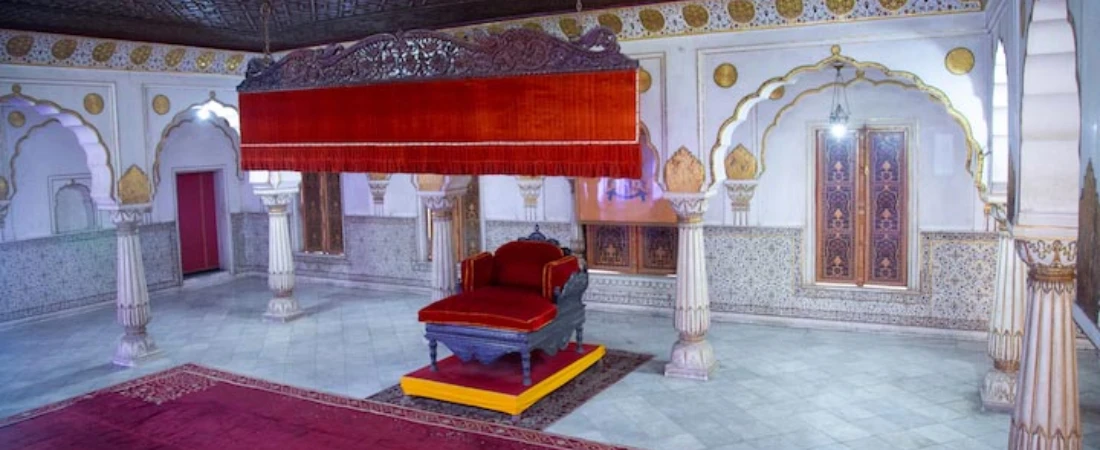
Junagarh Fort is not just an architectural wonder; it also houses a museum that preserves the grandeur and personal lives of the Bikaner royal family. Established in 1961, the Junagarh Fort Museum is a time capsule of Bikaner’s regal past. It showcases a priceless collection of weapons, manuscripts, miniature paintings, royal costumes, and ceremonial artifacts. Among the most striking displays is a rare biplane from World War I, gifted by the British to Maharaja Ganga Singh, making it one of the few forts in India with an actual aircraft in its collection. The museum also displays ornate palanquins, ivory-inlaid furniture, silver thrones, and jewel-encrusted arms that reflect the royal lifestyle. There are galleries dedicated to the arts and crafts supported by the rulers of Bikaner, illustrating their patronage of culture. Walking through the museum gives you an intimate glimpse into the everyday lives of the royals — their rituals, their battles, and their aspirations — told through objects that have survived generations.
The Perfect Time to Visit
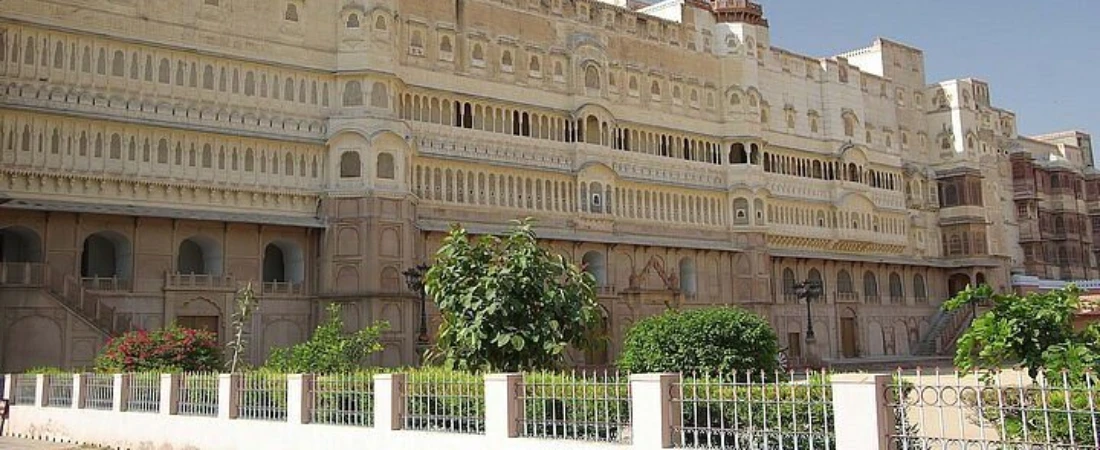
The ideal time to visit Junagarh Fort is during the cooler months from October to March. Rajasthan’s desert climate can be extremely hot in the summer, with temperatures often rising above 45°C, making it difficult to fully enjoy outdoor attractions like this sprawling fort. In contrast, winter offers a pleasant climate with clear skies and comfortable weather for sightseeing. This is also the time when Bikaner hosts several festivals, the most famous being the Bikaner Camel Festival held every January. The festival brings the city to life with camel parades, folk music, traditional dance performances, and handicraft bazaars. Visiting Junagarh Fort during such festive times adds a colorful dimension to the historical experience. The evenings in Bikaner are particularly beautiful, and the sandstone walls of the fort take on a warm golden hue as the sun sets, offering a stunning view and perfect photo opportunities. Winter, therefore, is not only the most comfortable season but also the most culturally rich time to explore the fort and its surroundings.
Places Around the Fort
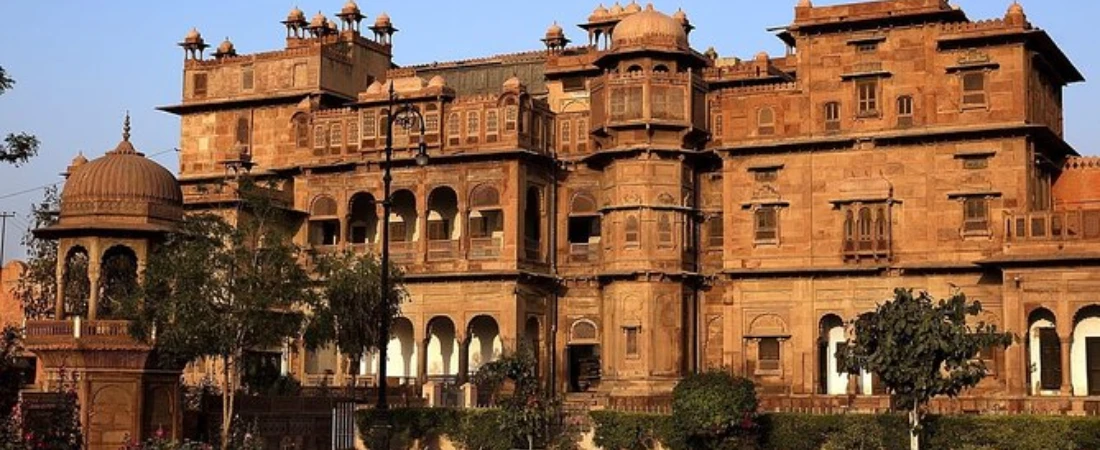
Junagarh Fort is just one jewel in Bikaner’s royal crown. After exploring the fort, visitors can head to the nearby Lalgarh Palace, which was constructed in the early twentieth century by Maharaja Ganga Singh in honor of his father. Lalgarh combines Indo-Saracenic, Mughal, and European architecture and now houses a part of the royal residence, a heritage hotel, and another museum. Another attraction worth visiting is the Ganga Singh Museum, where archaeological findings, ancient coins, and regional handicrafts are on display. For something more unique, the National Research Centre on Camel offers an unusual experience where you can interact with different camel breeds, learn about their role in Rajasthan’s economy, and even try camel milk products. Bikaner’s bustling markets near the old city are also worth visiting for authentic handicrafts, colorful fabrics, and local snacks like Bikaneri bhujia and rasgullas. Each of these locations adds more flavor to your journey, helping you understand the vibrant blend of tradition and modernity that defines Bikaner today.
Conclusion
Junagarh Fort Bikaner stands as a proud reminder of Rajasthan’s magnificent past — a past full of bravery, wisdom, art, and devotion. It is a place where stone walls whisper stories of warrior kings, intricate murals echo the creativity of artisans, and the desert sun adds a golden glow to every arch and dome. Unlike many other forts that have faded over time, Junagarh remains alive with its rich collection, preserved architecture, and timeless spirit. Whether you are a lover of history, an admirer of architecture, or a curious traveler looking to go beyond the usual tourist trails, Junagarh Fort promises an unforgettable journey into India’s royal heritage. A visit here is not just a tour — it is a walk through time, in the footsteps of kings and queens who once ruled the desert kingdom of Bikaner with pride and grace.


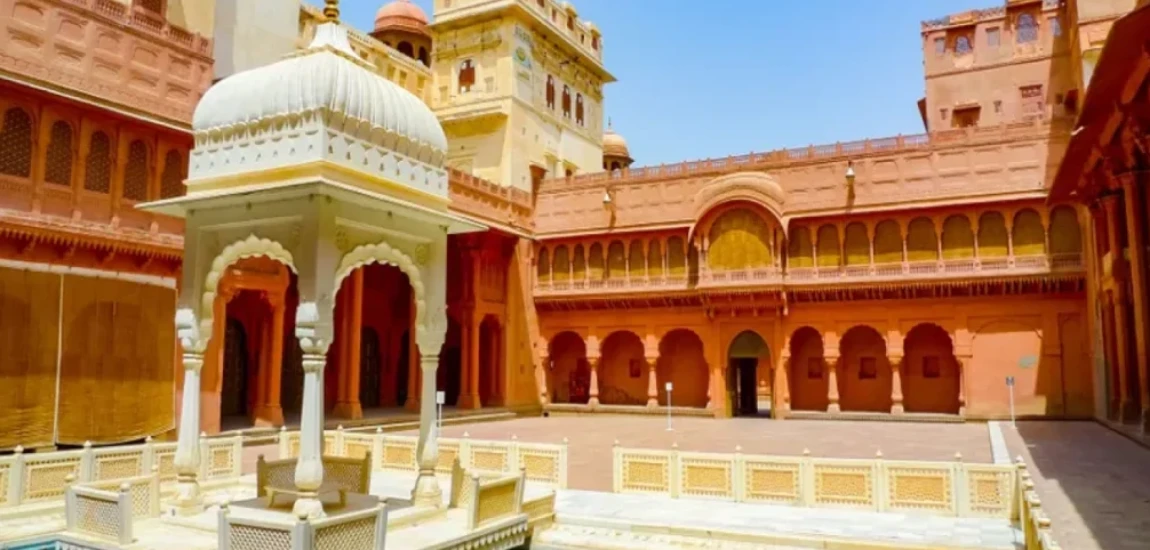







Leave a comment